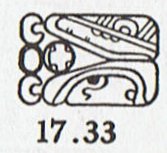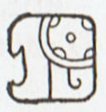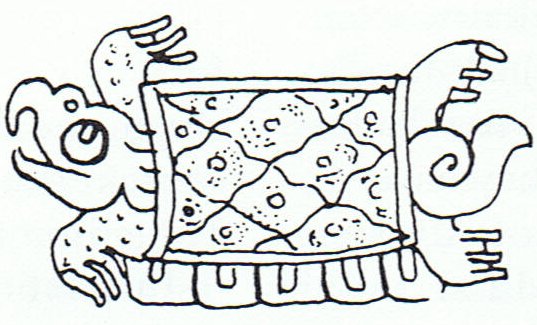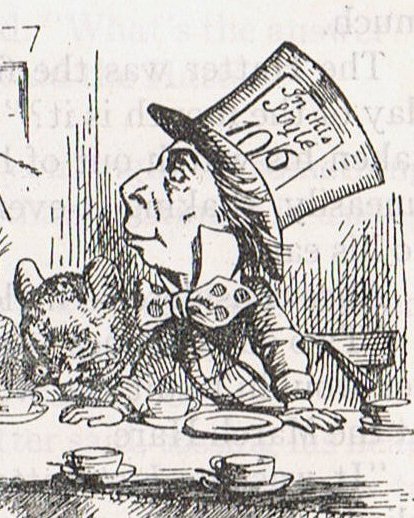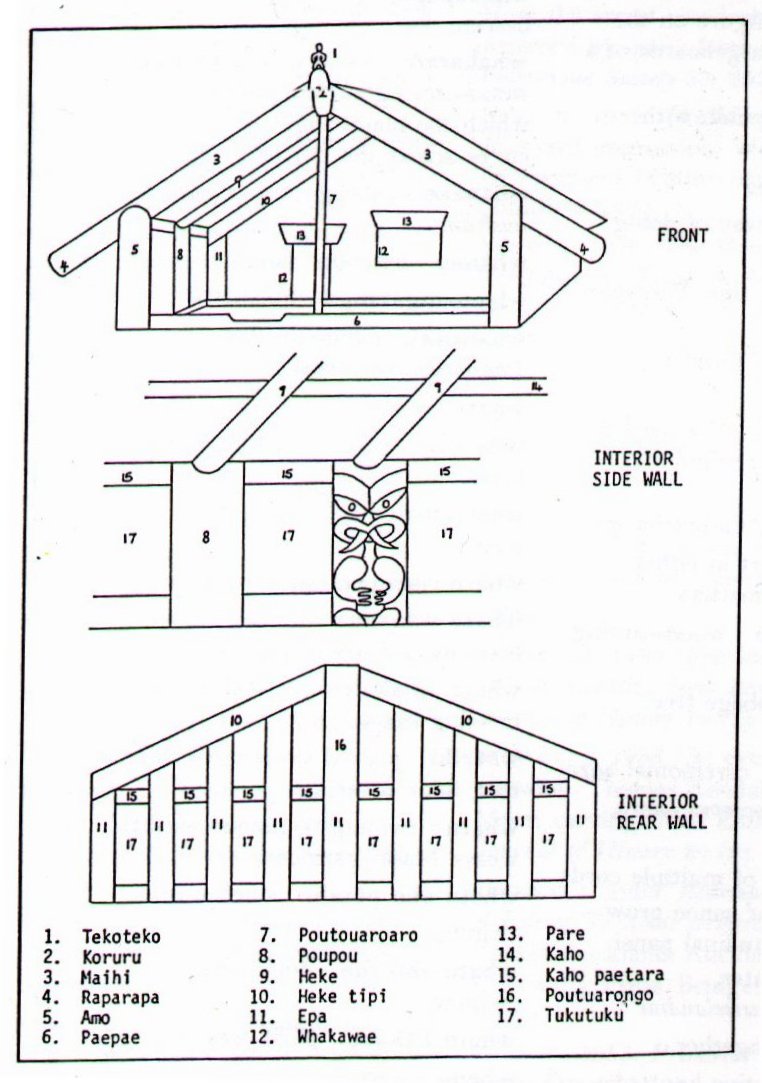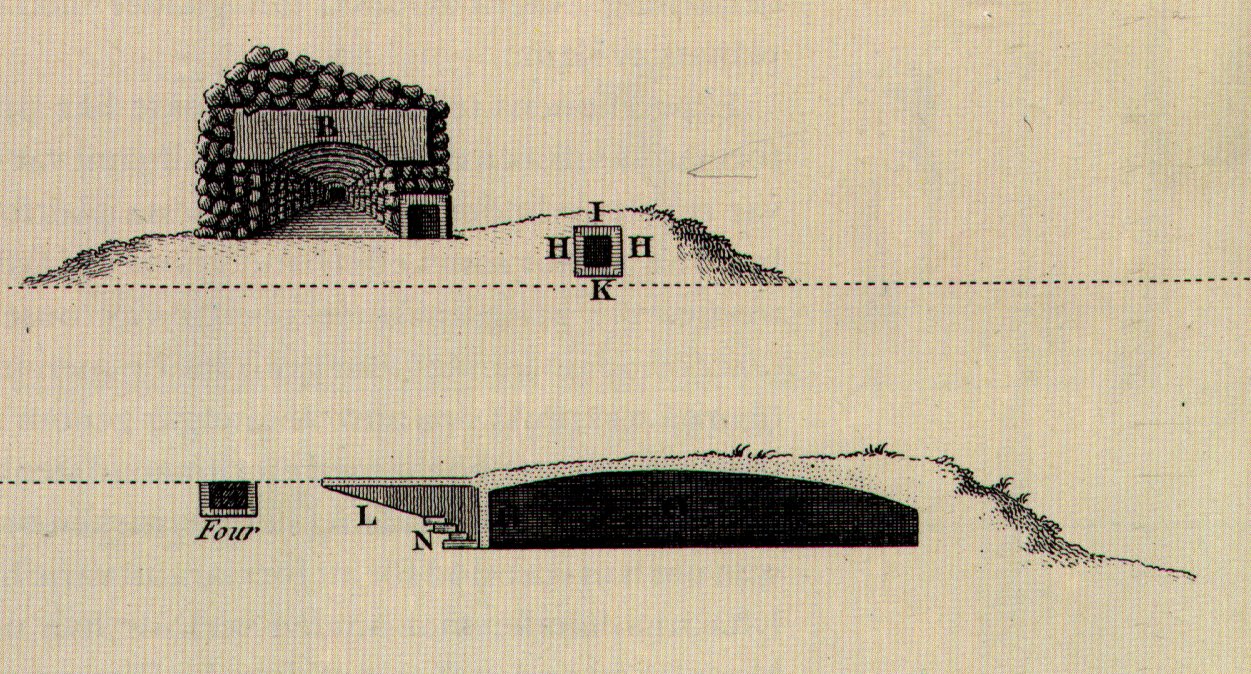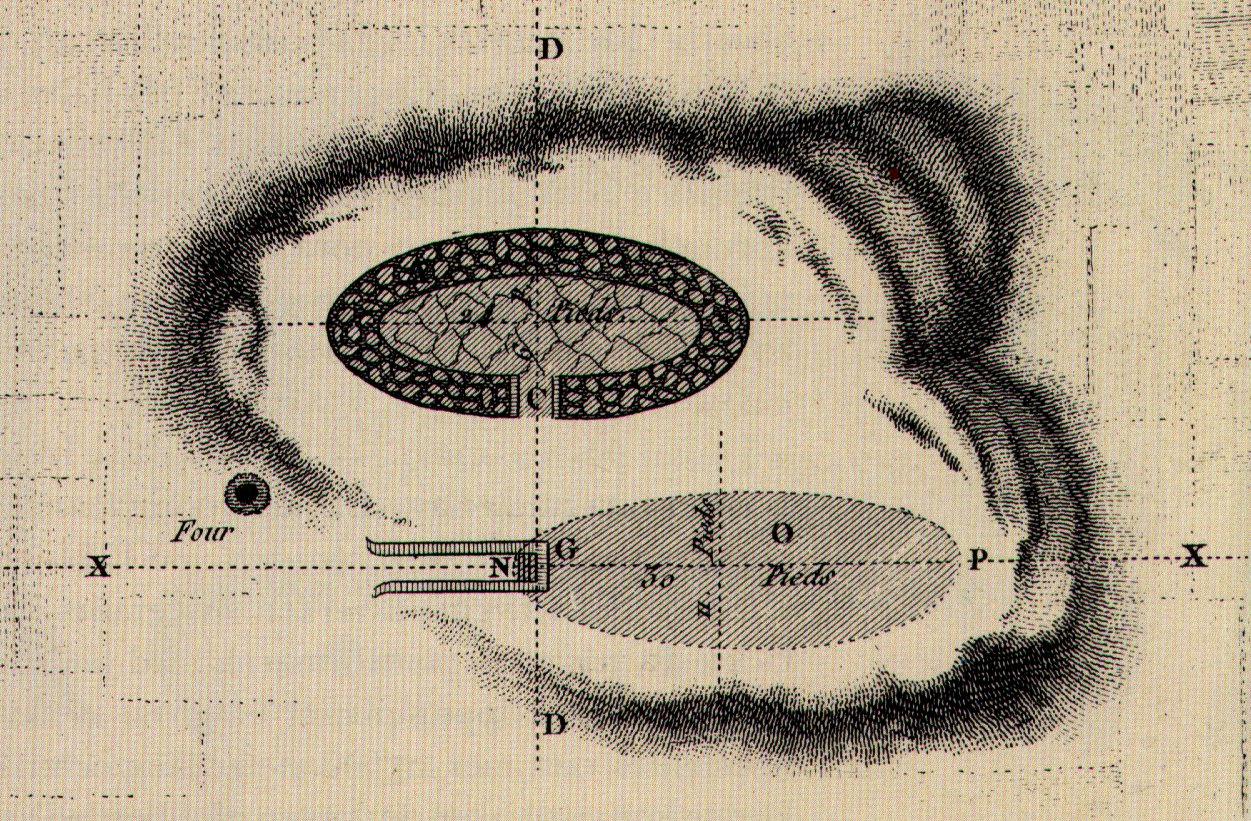59. The quartet of similar maitaki glyphs in the G text seem to prove (to provide) some kind of connection with the cardinal points:
And the central mata ('eye') in maitaki could refer to where new 'land' would emerge again into daylight, into the open space between sky (top) and earth (bottom).
We can compare with the 3 'eyes' arranged vertically in the Mayan 17.33 illustration below (to be read from right to left as always of course): ... The Maya word cab means earth, world, tierra, the place below, opposed to caan, the sky. The overwhelming evidence on the glyph and its associations in the pictures and texts is for this same meaning, Earth.
A most interesting glyph in this connection is one found in Maudslay's Tikal, plate 74, glyph 13, our form 17.33. The text on the stela shows that this glyph indicates the passage of one day, from 6 Eb, 0 Pop to 7 Eb, 1 Pop; the sun or kin, preceded by the numeral 1, is seen entering between the caban-sign and what we shall later come to identify as the sky-glyph ... The numeral 1 has in 17.33 been drawn like an Oval. The beginning could be perceived as an egg (or a closed bivalve), carrying the unseen unknown creature inside representing what would become - the not yet known future. There was no standard sign for zero time, but clearly we can see a pair of 'turtle eyes', one above and one below:
Counting from maitaki in Ga3-17 (76 = 73 + 3) up to and including maitaki in Gb4-27 (347) gives as a result 272 (= 2 * 136 = 4 * 68). However, we should perhaps count not from the Nose of the Lion but from Ga3-14 (π), or from the Knot (Ukdah) at JUNE 10 - the beginning of the month when Old Jupiter was terminated:
In Anakena 5 the Explorers left their new house - 25 days after the day when they had erected it on the edge of Rano Kau. 186 ("July 5) - 161 ("June 10) = 25. Houses were built at times of birth.
And the same should then be true also for the birth of a new land.
... In Mexican cosmology the sky fell down as the result of a prolonged rainy spell. Two gods changed themselves into trees with which it was then supported. Rain also caused the collapse of the sky in a story told by the Kato of the northwestern United States. Naga-itcho, Great Traveler, saw that the old sky which was made of sandstone and badly cracked in places was about to fall, so he and Thunder constructed a new sky. They supported it on pillars with openings at the cardinal points for clouds, winds, and mist to pass through and laid out winter and summer trails for the Sun to follow. Then it rained for many days and the old sky fell as they had anticipated. Water covered everything on the earth. When the rains ceased Naga-itcho and Thunder raised the new sky and set it in place. 'It was very dark', the curious myth continues. 'Then it was that this new earth with its long horns got up and walked down from the north'. With Naga-itcho riding on its head, it traveled far south and settled down in the place where it now lies, surrounded by the Great Waters ... The American Indian myths, anthropologists have suggested, symbolize man's early efforts at house building. The evolution from pit houses to terraced pueblos still seen in the Southwest is indeed an achievement worthy of commemoration. Among the tropical Polynesians house building was a fairly simple problem and architecture reached its highest development in New Zealand where materials were abundant and the climate necessitated structures capable of excluding the winter cold. The myth in question must have originated in the remote past and was brought from the Asiatic mainland where somewhat greater extremes of temperature marked the progress of the year. Tu the Sky-propper used arrowroot trees to support the sky after it had collapsed. So, too, men learned by trial and error how to plant posts firmly enough in the ground to support the rafters on which the roof rested. It could not have been easy to make a stable structure which would withstand wind and rain, and doubtless many a roof collapsed which its builder had considered rather a neat job. Consequently, as primitive man strove to hew out posts and rafters with half-shaped stone axes and to fasten them together in some manner so that they would carry the weight of the thatched roof and not blow down in the first hard wind, he must often have looked up at the sky and marveled that it stood so firm through tempest and hurricane and have speculated as to how it was ever raised so high above trees and mountain tops in the first place. As his repeated efforts to keep a shelter over the heads of his wife and children, as well as his own, ended in disaster, perhaps he consoled himself with the thought that even the gods must have suffered many failures before they finally succeeded in making the sky stay up there where it belonged ...
|
|||||||||||||||||||||||||||||||||||||||||||||||||||||||||||||||||||||||||||||||||||||||||||||||||||||||||||||||||||||||||||||||||||||||||||||||||||||||||||||||||||||||||||||||||||||||||||||||||||||||||||||||||||||||||||||||||||||||||||||||||||||||||||||||||||||||||||||||||||||||||||||||||||||||||||||||||||||||||||||||||



